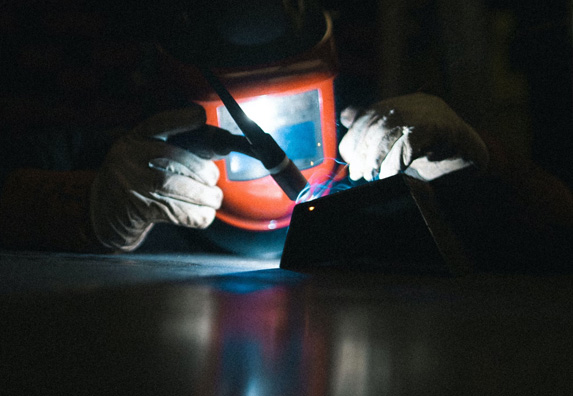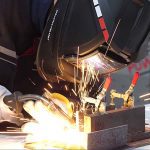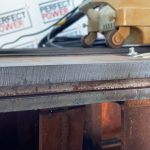Are you interested in welding and want to pursue this profession? Do you love TIG welding and make an effort to learn about it? This is when you need them about TIG welding and its related information. You will probably start with the TIG welding setup for beginners first. We are ready to share with you!
What do you need to know when TIG Welding setup for beginners?
021208.com
Introduction
TIG welding, also known as Gas Tungsten Arc Welding (GTAW), is a versatile welding process that offers excellent control and produces high-quality welds. If you’re a beginner looking to dive into the world of TIG welding, this guide will provide you with valuable insights on setting up your TIG welding equipment for optimal performance.
Understanding TIG Welding Setup
1. Safety First
Before diving into the technical aspects of TIG welding, it’s crucial to prioritize safety. Ensure you have the necessary safety equipment, including welding helmet, gloves, and protective clothing. Proper ventilation in your workspace is also essential to prevent the inhalation of harmful fumes.
2. Power Source and Machine Setup
A reliable power source is vital for TIG welding. Ensure your TIG welding machine is connected to a stable power supply. Adjust the machine settings according to the material you’ll be welding, including the type and thickness. Consult the manufacturer’s manual for specific guidelines on machine setup.
3. Shielding Gas Selection
TIG welding requires a shielding gas to protect the weld pool from atmospheric contamination. Argon is the most commonly used shielding gas for TIG welding as it provides excellent arc stability and weld quality. Ensure you have a sufficient supply of the appropriate shielding gas for your project.
4. Tungsten Electrode Selection and Preparation
Selecting the right tungsten electrode is crucial for successful TIG welding. The most commonly used type is thoriated tungsten due to its superior performance. Ensure the tungsten electrode is properly sharpened to a fine point using a dedicated tungsten grinder. A correctly prepared electrode improves arc stability and weld quality.
5. Gas Cup and Nozzle Selection
The gas cup, also known as the TIG torch nozzle, plays a crucial role in shielding the weld pool and maintaining a stable arc. Select a gas cup size appropriate for your welding application. Smaller cups are ideal for intricate welds, while larger cups are suitable for thicker materials that require more shielding gas coverage.
6. High-Frequency (HF) Start Setup
Many TIG welding machines feature a high-frequency (HF) start option for initiating the arc. Activate the HF start function if available, as it provides a smooth and reliable arc initiation. Adjust the HF start settings according to the material thickness and welding parameters.
7. Polarity and Gas Flow
Ensure the polarity of the TIG torch is correctly set according to the type of metal being welded. Direct current electrode negative (DCEN) is commonly used for most materials. Additionally, set the appropriate gas flow rate using a flow meter to ensure adequate shielding gas coverage during the welding process.
8. Welding Technique and Practice
Mastering the art of TIG welding requires consistent practice and attention to detail. Experiment with different welding techniques such as the push and pull methods to determine which one suits your style and produces the best results. Maintain a steady hand and control the travel speed to achieve precise and aesthetically pleasing welds.
Always make sure to wear the appropriate personal protective equipment and follow all safety guidelines. Practice and patience are key to becoming proficient in TIG welding.
021208.com
Conclusion
By following the essential steps outlined in this guide, you’re now equipped with the knowledge to set up your TIG welding equipment as a beginner. Remember, practice makes perfect, so take the time to refine your skills and experiment with different parameters. With dedication and perseverance, you’ll become proficient in TIG welding and create impressive welds in no time. Stay safe, enjoy the process, and let your creativity shine through your welds!
Frequently asked questions (Weld FAQ)
What is the best type of TIG welding power source for a beginner?
For a beginner, it is recommended to start with a machine that is rated around 150-200Amp. This will allow you to practice on the same metal thickness and type before moving forward.
What is the best type of welding torch for a beginner?
For a beginner, it is recommended to start with a TIG welding torch that is rated for the amperage range you’ll be using and the thickness of the workpiece. It need to be convenient to handle and move around.
How do I choose the correct filler metal for my TIG welding project?
When choosing filler metal, it is important to select one that is the same or similar to the base metal in terms of composition and strength. It should also be compatible with the base metal and the shielding gas used, have the appropriate melting temperature for the base metal and the welding process, and be in a form that is easiest to use for the specific welding application.











